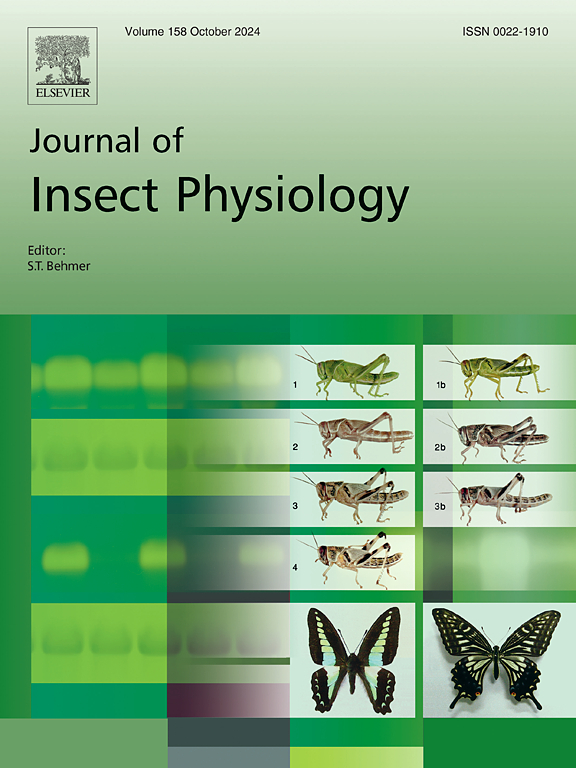血青素有助于迁徙蝗虫对缺氧的胚胎适应。
IF 2.3
2区 农林科学
Q1 ENTOMOLOGY
引用次数: 0
摘要
环境缺氧会对后生动物的生存造成重大威胁,尤其是昆虫胚胎。血青素在昆虫胚胎中表现为显性表达,但其在低氧适应中的具体作用尚不清楚。土栖蝗卵在发育过程中可能经常经历缺氧。对迁徙蝗胚胎中血青素的生理生化特性进行了全面分析。我们的研究结果表明,革命过程是蝗虫胚胎发生过程中关键的缺氧敏感事件。血青素在革命阶段表达突出,对缺氧反应强烈。相对旋转时间与血青素亚单位2 (HC2)的表达呈负相关,表明HC2可能与蝗虫胚胎的缺氧适应密切相关。此外,利用CRISPR/Cas9技术构建了一株HC2突变株,发现HC2缺失的蝗虫胚胎具有更高的缺氧敏感性。HC2的下调增加了无氧代谢和氧化应激,同时降低氧化代谢。综上所述,这些发现清楚地证明了血青素在昆虫胚胎缺氧适应中的关键作用。本文章由计算机程序翻译,如有差异,请以英文原文为准。

Hemocyanin contributes to embryonic adaptation to hypoxia in the migratory locust
Ambient hypoxia can pose a major threat to the survival of metazoan organisms, especially insect embryos. Hemocyanin exhibits dominant expression in insect embryos, but its specific roles in hypoxia adaptation remain unexplored. Soil-dwelling locust eggs may frequently experience hypoxia during development. A comprehensive analysis of physiological and biochemical characters of hemocyanin was conducted in the embryos of migratory locust Locusta migratoria. Our results demonstrated that the revolution process was the critical hypoxia-sensitive event during locust embryogenesis. Hemocyanin presented a prominent expression in the revolution stage and exhibited strong responses to hypoxia. The relative duration of revolution was correlated negatively with the expression of hemocyanin subunit 2 (HC2), suggesting that HC2 might be closely associated with hypoxia adaptation of locust embryos. Furthermore, a HC2 mutant locust strain was established using the CRISPR/Cas9 technology, and higher hypoxia sensitivity was found for HC2-deficient locust embryos. Knockdown of HC2 increased anaerobic metabolism and oxidative stress while reducing oxidative metabolism. Overall, these findings clearly demonstrated the pivotal roles of hemocyanin in hypoxia adaptation of insect embryos.
求助全文
通过发布文献求助,成功后即可免费获取论文全文。
去求助
来源期刊

Journal of insect physiology
生物-昆虫学
CiteScore
4.50
自引率
4.50%
发文量
77
审稿时长
57 days
期刊介绍:
All aspects of insect physiology are published in this journal which will also accept papers on the physiology of other arthropods, if the referees consider the work to be of general interest. The coverage includes endocrinology (in relation to moulting, reproduction and metabolism), pheromones, neurobiology (cellular, integrative and developmental), physiological pharmacology, nutrition (food selection, digestion and absorption), homeostasis, excretion, reproduction and behaviour. Papers covering functional genomics and molecular approaches to physiological problems will also be included. Communications on structure and applied entomology can be published if the subject matter has an explicit bearing on the physiology of arthropods. Review articles and novel method papers are also welcomed.
 求助内容:
求助内容: 应助结果提醒方式:
应助结果提醒方式:


